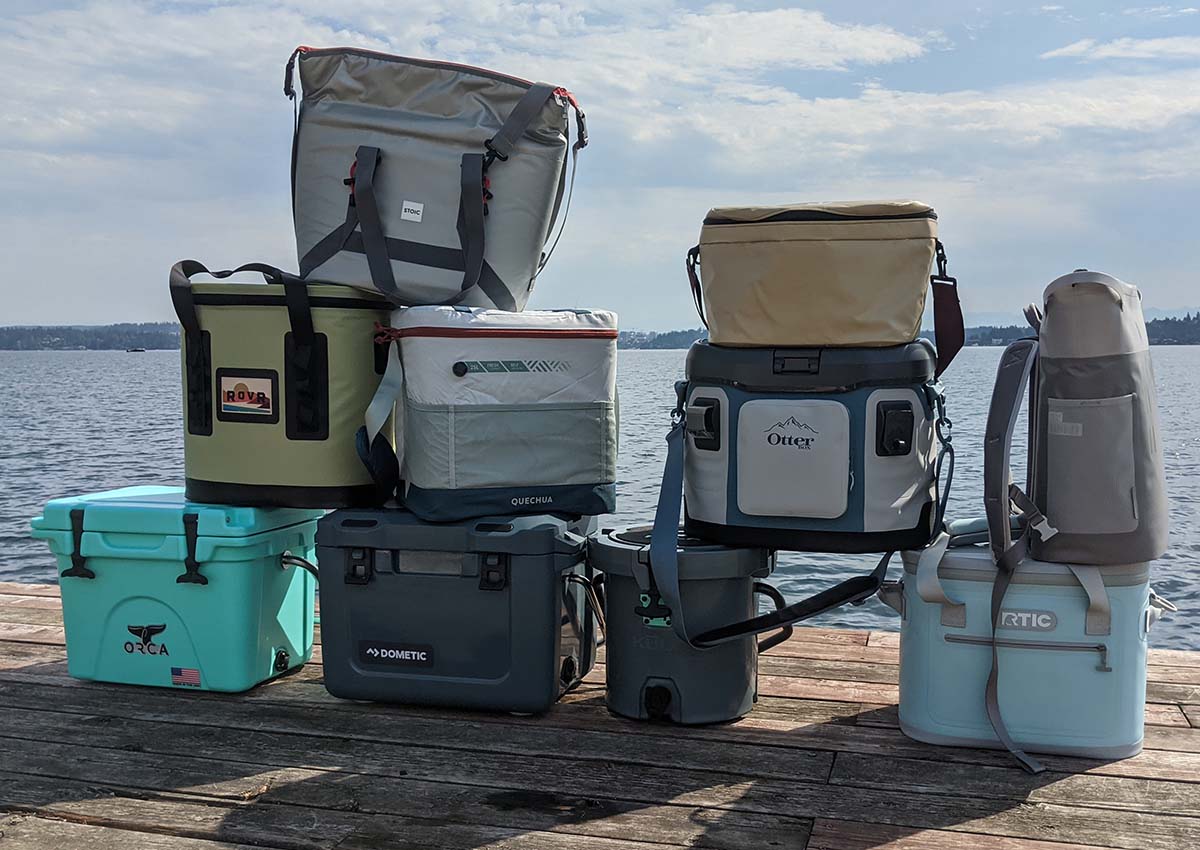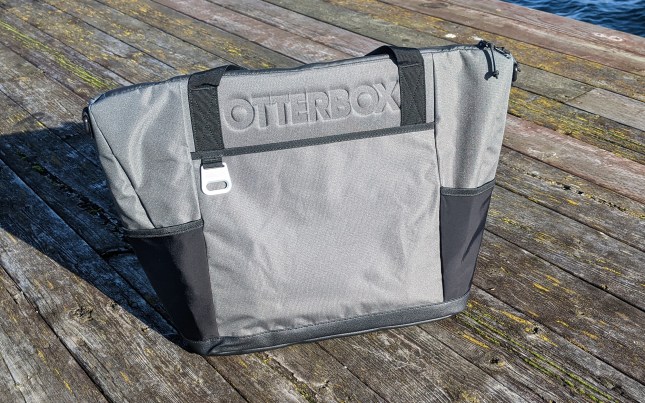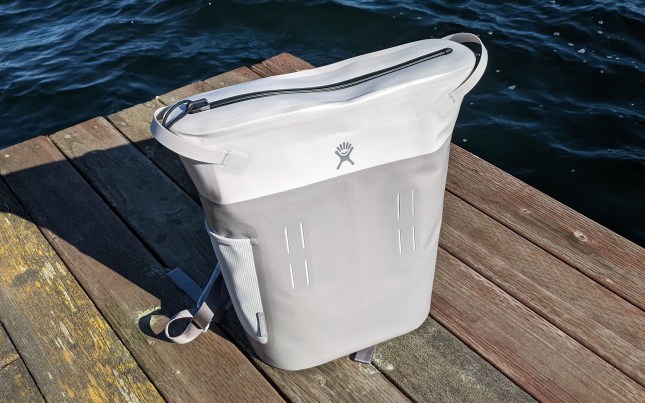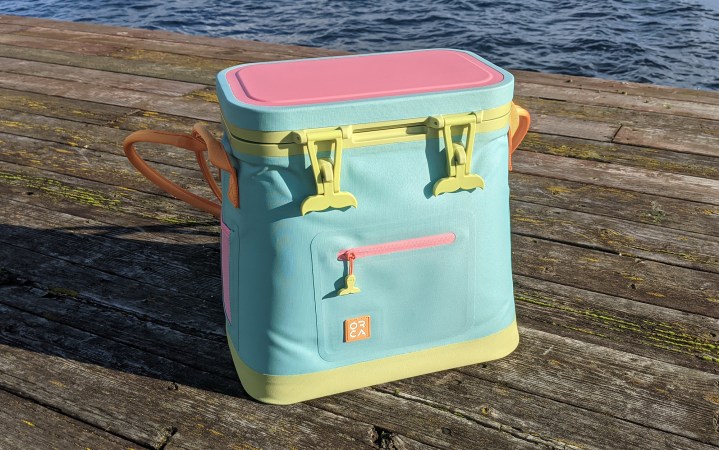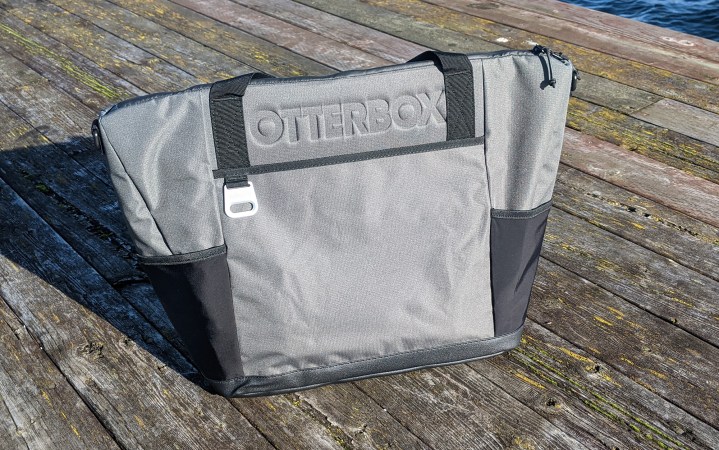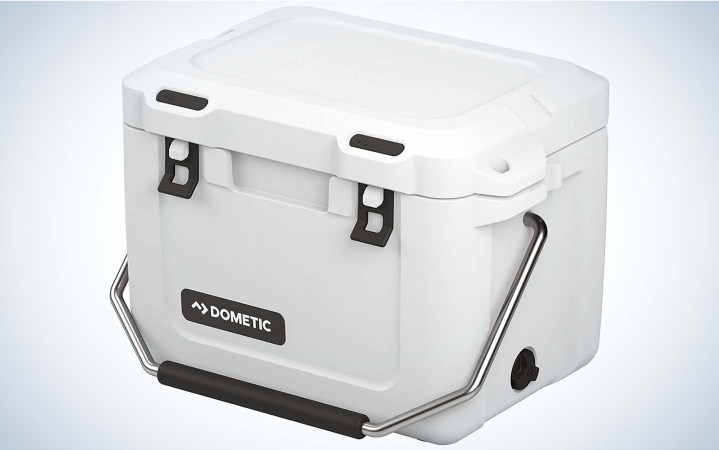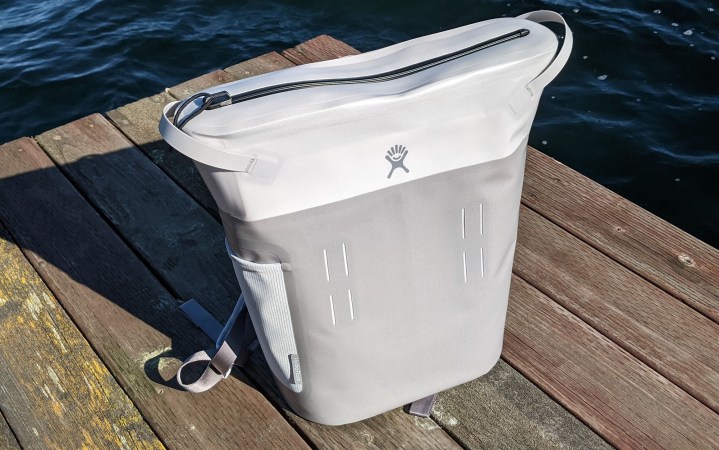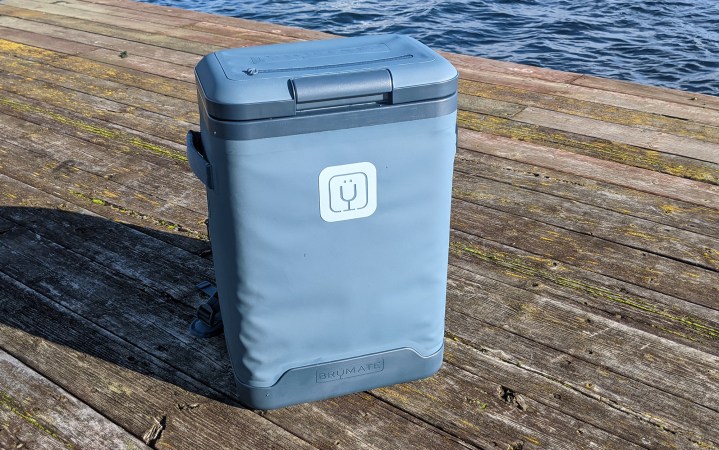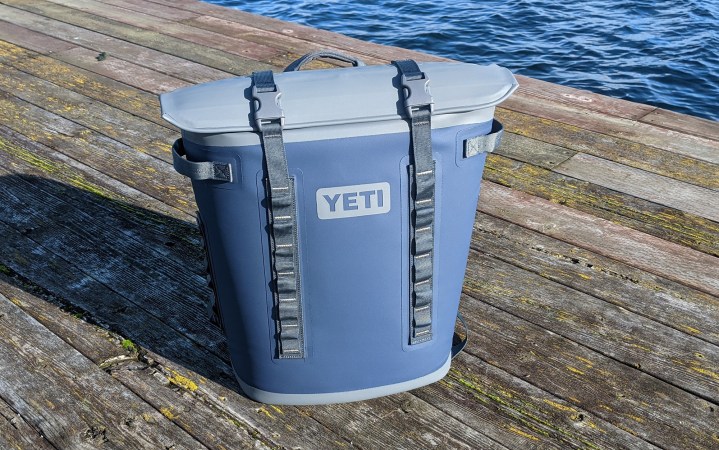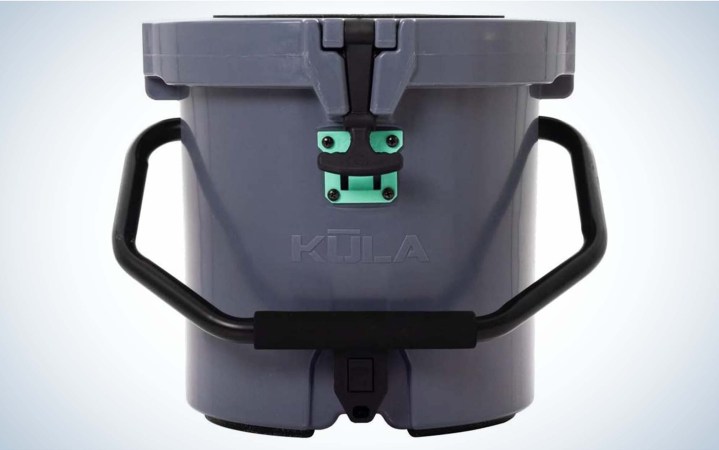We may earn revenue from the products available on this page and participate in affiliate programs. Learn More ›
There are plenty of trips for which your heavy-duty camping cooler is overkill, and investing in a small cooler can help save precious cargo space in your car. But your needs for an all-day outing to the beach compared to a weekend-warrior style overnight stay at a dispersed campsite can vary considerably. After testing fifteen of the most popular models from well-known brands, and scoring them on a number of criteria, I’ve identified the best small coolers.
Best Overall: ORCA Wanderer Tote
↓ Jump to Review
Best Value: Otterbox Tote
↓ Jump to Review
Best Hard Cooler: Dometic Patrol 20
↓ Jump to Review
Best Backpack: Hydro Flask Day Escape
↓ Jump to Review
Most Packable: Monti Shasta
↓ Jump to Review
Best Ice Retention: Brumate MagPack
↓ Jump to Review
Yeti Hopper M20
↓ Jump to Review
How I Tested the Best Small Coolers
One of the most important tests for small coolers is ice retention. To ensure as level a playing field as possible, I put one bag of store-bought ice into each of the coolers at the same time and then kept them in the same room. Whenever I checked the ice in one cooler to see if it had melted, I checked it in all of them. Next, I checked how watertight each cooler was, including at the drainage port (where applicable) and around the lid, by filling the cooler with water and then tipping it in a variety of directions. I also screwed and unscrewed the drainage ports multiple times to get a feel for how waterproof (or lack thereof) each was—unloading your car only to find a puddle forming underneath your tent or sleeping bags is not an experience anyone wants to have. Finally, I looked at how difficult each latching system was to operate.
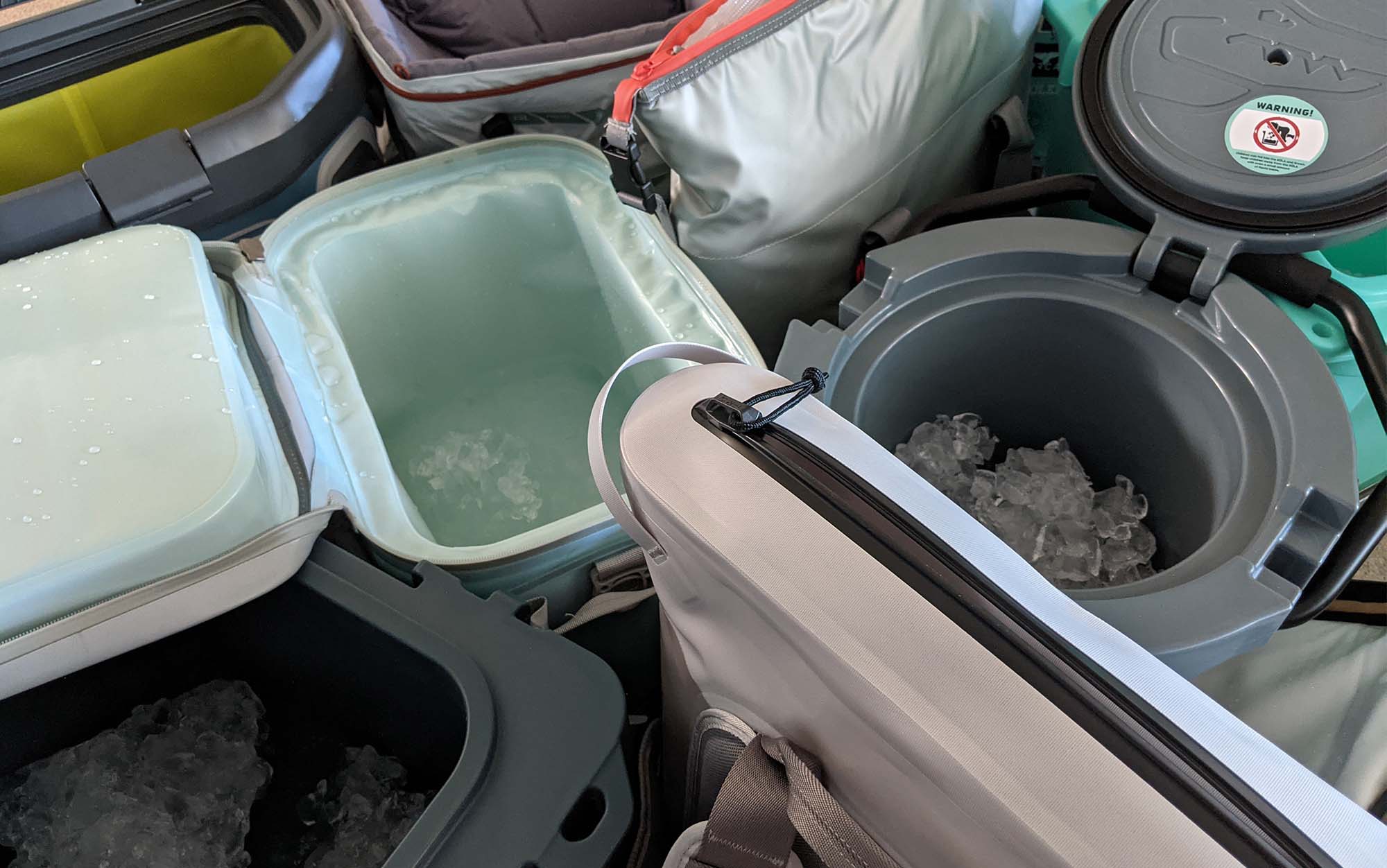
I also considered the accessories provided with each cooler, how easy it was to transport or move, and the overall cost. Recommendations also took into account the size of each cooler, how easy they were to open and close, and whether they collapsed down after use (to better fit into a small or midsize car).
| Small Cooler | Price | Capacity | Weight | Packability | Waterproof | Latch | Carry Comfort | Hours for a Bag of Ice to Melt |
| Brumate MagPack | $275 | 20 liters | 7.8 lbs | N/A | Great | Poor | Great | 62 |
| Dometic Patrol 20 | $170 | 19 liters | 17.6 lbs | N/A | Fair | Great | Poor | 56 |
| Engel HD20 | $180 | 21 liters | 3.5 lbs | N/A | Great | Fair | Fair | 45 |
| Hydro Flask Day Escape | $200 | 20 liters | 3 lbs | Good | Great | Good | Great | 37 |
| Kula 2.5 | $225 | 9.5 liters | 11 lbs | N/A | Good | Good | Poor | 61 |
| Monti Shasta | $144 | 23 liters | .9 lbs | Excellent | Fair | Good | Good | 55 |
| Orca 20 Quart | $235 | 19 liters | 18 lbs | N/A | Great | Poor | Poor | 51 |
| ORCA Wanderer Tote | $225 | 15 liters | 6.3 lbs | N/A | Great | Excellent | Fair | 60 |
| Otterbox Tote | $90 | 29 liters | 3.3 lbs | Great | Poor | Great | Good | 44 |
| Otterbox Backpack | $80 | 18 liters | 2.7 lbs | Good | Poor | Great | Great | 42 |
| RTIC Soft Pack 30 | $120 | 21 liters | 4 lbs | N/A | Great | Poor | Fair | 38 |
| RovR TravelR 30 | $300 | 28 liters | 4.4 lbs | N/A | Great | Good | Fair | 37 |
| Snow Peak Soft Cooler 18 | $110 | 22 liters | 1.8 lbs | Great | Fair | Good | Fair | 35 |
| Stoic 30-Can Heavy Duty | $80 | 26 liters | 2.2 lbs | Great | Fair | Great | Good | 36 |
| Yeti Hopper M20 | $325 | 20 liters | 4.5 lbs | Fair | Great | Excellent | Good | 55 |
The Best Small Coolers: Reviews & Recommendations
Best Overall: ORCA Wanderer Tote
Key Features
- Capacity: 15 liters
- Weight: 6.3 pounds
- Ice Melt Test: 60 hours
Pros
- Great ice retention
- Easy to use latch
- Waterproof
- Fun color options
Cons
- Doesn’t pack down
- Slightly less capacity than other models I looked at
The Orca Wanderer Tote was the cooler that ticked all the boxes during testing. It had excellent ice retention, coming in a close second to the Brumate MagPack. It took 60 hours for 7 pounds of ice to completely melt at room temperature (68 to 72 degrees). That kind of performance tells me that not only is this cooler going to keep everything cold for your day at the beach, it’s also equipped for a weekend car camping getaway. That’s impressive for a soft cooler.
But the ice retention wasn’t the only thing I loved about the Orca Wanderer Tote. I was very impressed by the latching system. Along with the Yeti Hopper M20, these were the easiest latches to use in my test, which is important when you’ve got other people going in and out of your cooler all day: The easier the latch, the more likely people will use it. Even better, when latched, this cooler was fully waterproof. While this cooler doesn’t pack down at all, and wasn’t as comfortable to carry as other soft coolers I looked at, it’s still miles better than a traditional hard-sided cooler. If you’re looking for a soft-sided cooler to round out your hot-weather arsenal, the Orca Wanderer Tote should go to the top of your list.
Best Value: Otterbox Tote Cooler
Key Features
- Capacity: 29 liters
- Weight: 3.3 pounds
- Ice Melt Test: 44 hours
Pros
- Lightweight for its capacity
- Affordably priced
- Comes with an ice pack
Cons
- Not waterproof
- Ice melted faster than other options in my test
If you’re rolling your eyes at the idea of spending upwards of $200, even $300, for a soft cooler: I get it. It’s a lot of money for something that’s just meant to keep your brews chilled at a picnic. Fortunately, there’s this affordably priced option from Otterbox, which held ice for almost two days during testing.
Read Next: The Best Soft Coolers
I also liked that it’s soft-sided form could be folded up when not in use. While it wasn’t anywhere near waterproof — along with the worst condensation in my test it also leaked out the zipper when tipped on its side — the Otterbox includes a bonus ice pack in the purchase price.
Best Hard Cooler: Dometic Patrol 20
Key Features
- Capacity: 19 liters
- Weight: 17.6 pounds
- Hours for a bag of ice to melt: 56
Pros
- Excellent ice retention
- Easy to use latch
Cons
- Heavy
- Awkward to carry
The Dometic Patrol 20 looks as if someone took a regular-sized cooler and then shrunk it down until it was child-sized. There are some negatives to this — mainly that it’s pretty beefy, and thus heavy and awkward to carry even when completely empty. But the positives easily outweigh this con. Not only was the Dometic Patrol 20 one of the top performers for ice retention in my test, lasting well over 48 hours in the August heat, but it also had some of the easiest-to-use latches in my test. If you’re looking for something smaller than a traditionally sized cooler to pack up your perishables for a long weekend camping then this is a smart choice.
Best Backpack: Hydro Flask Day Escape
Key Features
- Capacity: 20 liters
- Weight: 2.6 pounds
- Insulation Test: 48 hours
Pros
- Very comfortable to carry
- Waterproof
- Mesh pocket
Cons
- Not the best ice retention
The Hydro Flask Day Escape has one of the most comfortable carries I’ve tested. This is what I would bring with me on a day hike, or really any carry longer than 50 yards. This is in large part due to its shape: It has a wider frame, with less depth, which holds the weight closer to your body than models that were free form or structured like a traditional cooler.
Read Next: The Best Backpack Coolers
While the backpack had (just) enough structure to support a heavier load, the lack of hip belt means that you should resist the urge to fully load this one up before heading out on a longer hike. One feature common to backpacks but not to backpack coolers that the Day Escape included was a haul handle, which is handy for at-home storage.
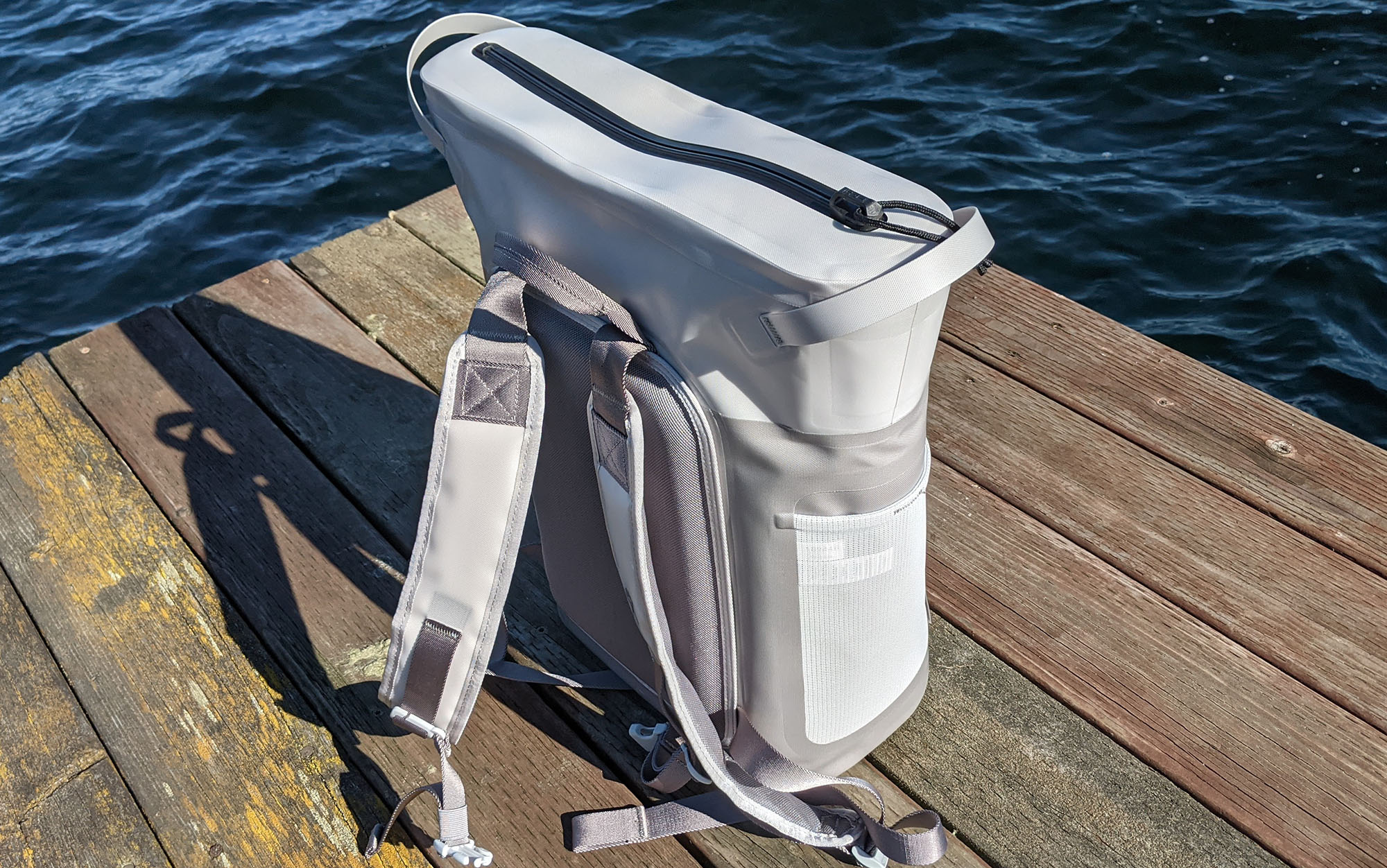
In addition to being comfortable, the Hydro Flask Day Escape also has all the hallmarks of one of the great small coolers, being fully waterproof and holding ice for 37 hours during my insulation test — not the longest in my test, but plenty for a picnic or day hike. I also liked that it had an outside mesh pocket — useful for stashing small items or needing somewhere to stick your trail beer on the go.
Most Packable: Monti Shasta
Key Features
- Capacity: 23 liters
- Weight: .9 pound
- Ice Melt Test: 55 hours
Pros
- Packs down very small
- Great ice retention
- Affordably priced
Cons
- Prone to condensation (although otherwise waterproof)
- Lack of structure means it’s easier to tip over and can have knobby bits when fully packed
- Sling style strap is less comfortable for long distances than traditional backpack straps
If you’re looking for a small cooler to save on space, then the Monti Shasta is the one for you. The exterior pocket doubles as a stuff sack for the rest of the cooler, which reduces the size down to 9 by 8 inches. Prior to testing I guessed this would negatively impact its performance in the ice retention test: not so. It was tied with the Yeti Hopper M20, taking 55 hours for 7 pounds of ice to melt. Even better: You have the option to use the rolltop to squeeze the excess air out of the small cooler when in transit, which should up its performance even more. This is a great, space-saving cooler with a unique design at a good price.
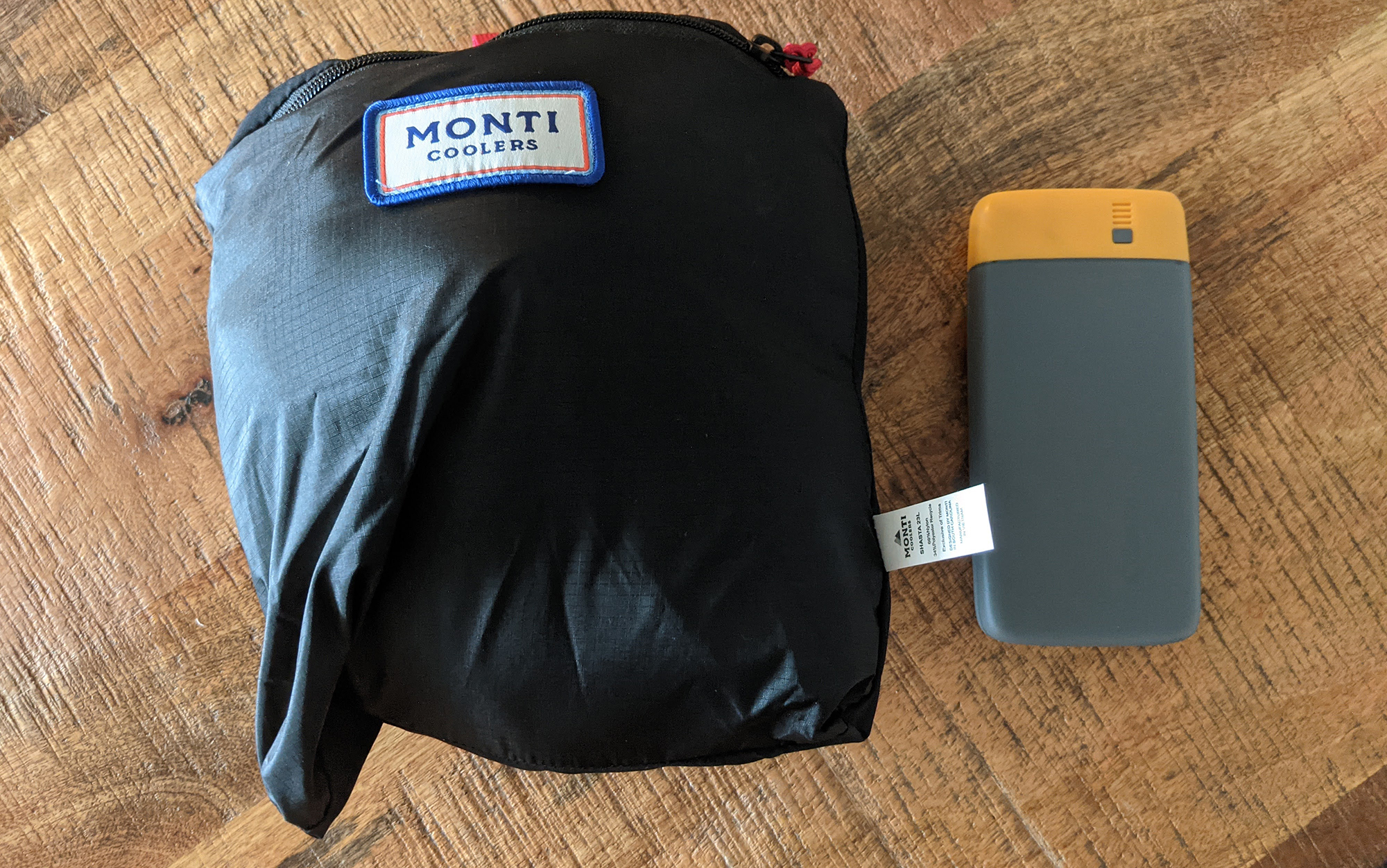
Laura Lancaster
After the first day of testing, I noticed some moisture on the exterior of the Monti Shasta. At first I thought it was leaking, but the limited amount of wetness over the course of two and a half days of testing suggests this was something else: condensation, a lot of condensation. Once you figure out what’s going on, it’s not a problem, but expect there to be a small wet spot wherever this cooler is sitting. Though, during testing, the zip and roll-top closure proved to be completely waterproof. It’s also worth noting that due to its design, this small cooler doesn’t have the structure of the other options in this story. It sits upright just fine, but will be more prone to tipping.
Best Ice Retention: Brumate MagPack
Key Features
- Capacity: 20 liters
- Weight: 7.8 pounds
- Ice Melt Test: 62 hours
Pros
- Best-in-class ice retention
- Comfortable carry
Cons
- Latch is difficult to use
- Doesn’t pack down
- On the expensive side
If what you want is the small cooler that will keep your drinks the coldest the longest, then go for the Brumate MagPack. It held ice longer than anything else I looked at, over two a half days. It was also one of the most comfortable small coolers to carry for longer distances. The issue with the Brumate MagPack is that the latching mechanism doesn’t work as intended. Like the Yeti Hopper M20, it uses magnets to help create a seal.
Unfortunately, during testing it was difficult to get the magnet to click properly. I found that if I closed it too lightly, the seal would be loose (affecting not only ice retention but also waterproofness). To get a good, strong seal I had to slam the lid down. That’s pretty annoying, and I don’t think it should be the case for a cooler at this price point. But its best-in-class ice retention is sure to turn heads as it’s starting to compete with the capabilities of rotomolded hard coolers.
Yeti Hopper M20
Key Features
- Capacity: 20 liters
- Weight: 4.5 pounds
- Ice Melt Test: 55 hours
Pros
- Great ice retention
- Excellent latch
- Waterproof
Cons
- Expensive
- Shoulder straps are a little stiff to start
Like with so many of their products, Yeti nailed nearly all the details on their Hopper M20 Backpack cooler, but at a cost. This one was over three times the price of my best value pick, and $100 more than my best overall pick.
Ice retention was excellent with the Yeti Hopper M20 backpack, tying for third in my test with the Monti Shasta. It also has an unusually excellent latching system. There are two buckles to tie down the roll-top opening for waterproof transport. But when you’re at the beach and your friends are going in and out of the cooler for brews, you won’t have to worry that they forgot to close the cooler, because there is a magnetic closure that is super effective, closing securely with the slightest effort. Check and check. The only real ding (besides price) are the straps, which are a little stiff out of the box but I expect to soften up over time.
Kula 2.5
Key Features
- Capacity: 9.5 liters (also available in a 22 liter size)
- Weight: 3.5 pounds
- Hours for a bag of ice to melt: 61
Pros
- Best-in-class ice retention
- Water resistant
- Can double as a beverage dispenser
Cons
- Expensive
- Not as comfortable to carry as others I tested
The Kula 2.5 took over 2.5 days for a bag of ice to melt in this cooler in hot, muggy conditions (70 to 80 degrees with an average of 50 percent humidity). And while other coolers that made it into day three of the ice retention test were starting to irk me with their difficult-to-use latches, the rubber toggle on the Kula was a breeze to move up and down. Its cylindrical shape made it a bit of a chore to cart around, so if you’re planning to hike in a distance before using your cooler it might be better to go with the most portable pick on this list.
Read Next: The Best Inflatable Paddle Boards
In addition to a bottle opener, the Kula 2.5 also incorporated two drainage options: a classic port located unusually on the underside of the cooler and a spigot on the body, allowing this small cooler to also double as a beverage dispenser (Don’t worry; it’s made from food-grade plastic).
Things to Consider Before Buying One of the Best Small Coolers
Purpose of the Best Small Coolers
What small cooler is right for you depends largely on what you plan to do with it. Those looking for an easy grab-and-go option to store beverages or the best camping snacks will likely prefer the larger capacity of soft coolers while individuals that need to keep the brats chilled for an overnight camping trip should go with the better ice retention of a hard-sided cooler.
Waterproof vs. Water-resistant
One of the biggest differentiators between the soft coolers in my test was their level of waterproofness. The RovR TravelR 30, RTIC Soft Pack 30, and Hydroflask Day Escape were all fully waterproof. No water escaped from the seams during the ice retention test, and no water leaked out the top or around the zipper when the cooler was flipped around while filled with water. As long as these three are fully zipped, you won’t need to worry about a cooler full of melted ice water tipping over in the back of your car. Of the hard-sided coolers, only the ORCA 20 Quart was fully waterproof.
Latching Mechanism of the Best Small Coolers
Latching mechanisms need to thread a fine needle: be sufficiently airtight and watertight to prevent cold air or moisture from escaping out the seams while also being easy enough to use that you can trust friends and family (including children) to actually use it. A latch that is too difficult to pull or snap shut will inevitably be left open, reducing the overall efficiency of the cooler. In the above table, I’ve rated the functionality of each latching system to help you evaluate which cooler is right for your purposes.
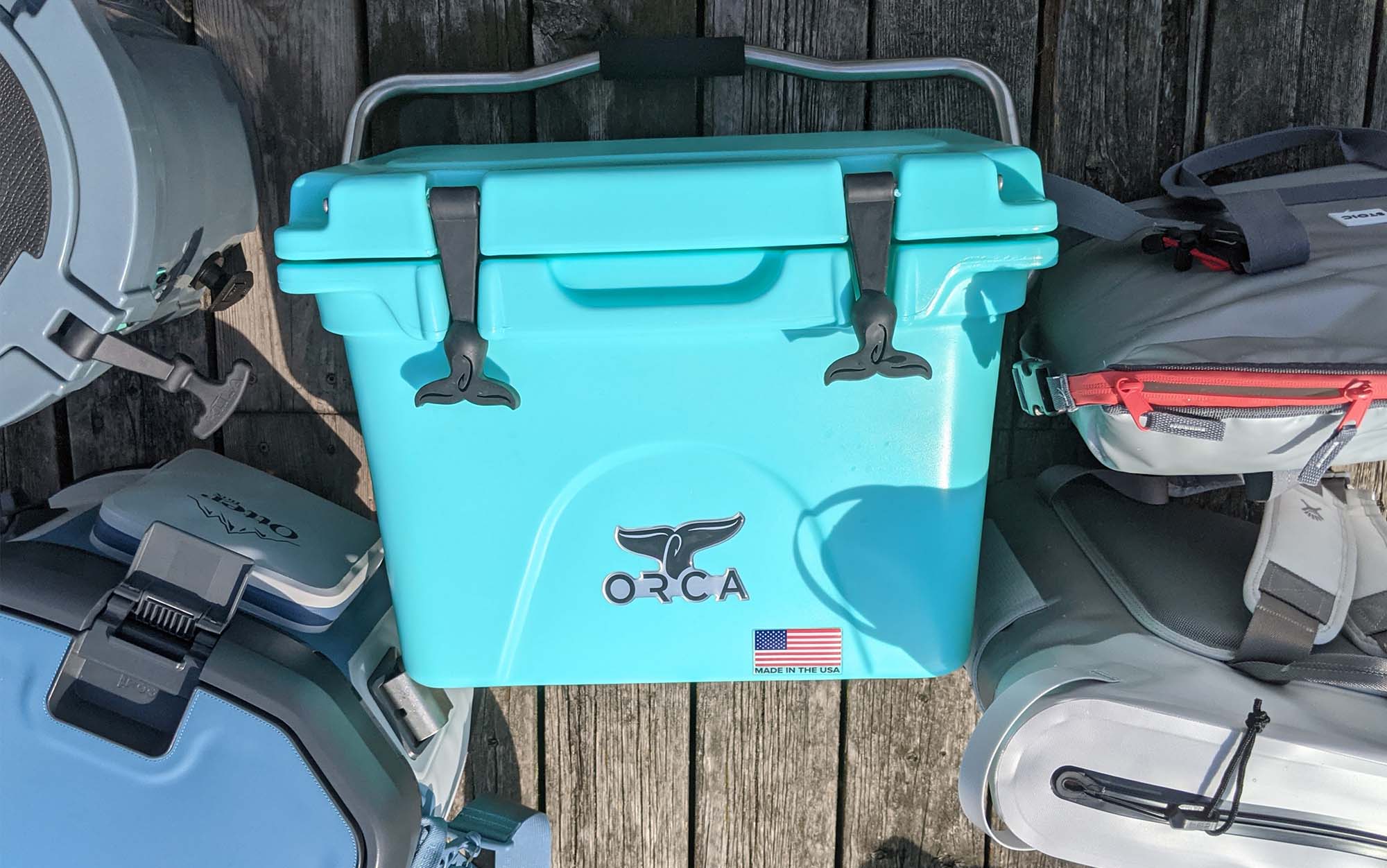
Read Next: Best Coolers with Wheels
FAQs
Small coolers can cost anywhere from $100 to $250, with hard-sided coolers typically costing more than soft-sided coolers, but also providing better ice-retention capabilities.
During testing, it was clear that hard-sided coolers were superior at ice retention over soft-sided coolers. So, if keeping your perishables as cold as possible for as long as possible is your top priority, then the choice is clear. However, there are several advantages to soft-sided coolers. During testing, the soft-sided coolers that incorporated waterproof zippers tended to have superior waterproofness over the hard-sided set. They were also significantly lighter than the hard-sided coolers and had a larger internal capacity relative to their overall size.
Whether or not you need a waterproof cooler depends on what you are using to cool it. If you are using one of the best ice packs for coolers, then it’s not essential because the amount of condensation that will come off your perishables and ice packs is negligible. However, if you plan to use ice cubes to cool your small cooler then it becomes more important. During testing I found that non-waterproof coolers tended to tip and spill quite easily. I would recommend purchasing a waterproof cooler if you plan to use ice as your primary cooling mechanism.
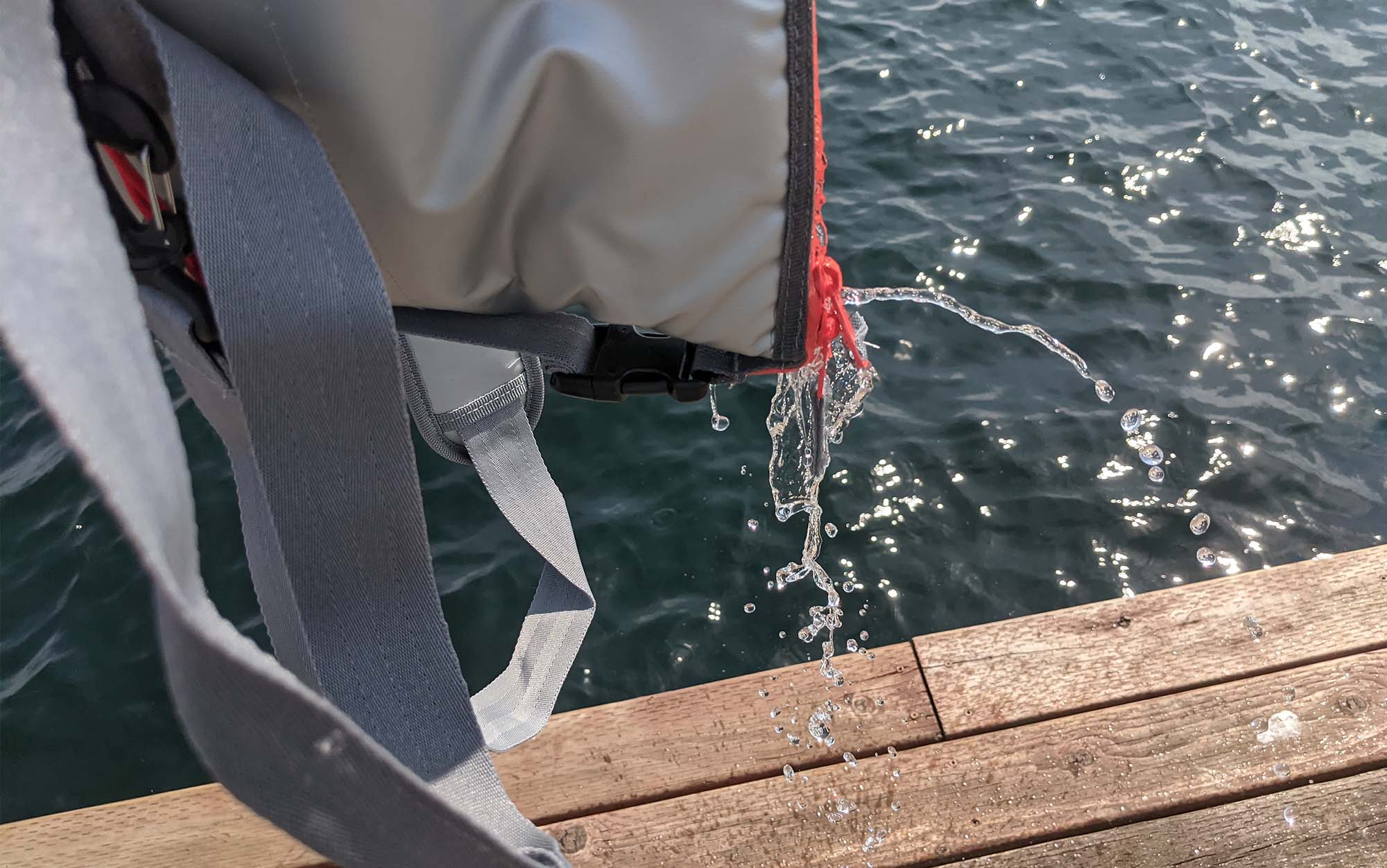
Final Thoughts on the Best Small Coolers
After testing ten products from ten different brands, I determined that the best small cooler for most people is the Kula 2.5 (or Kula 5). Despite its unusual shape, it has excellent ice-retention capabilities and functioned well across a number of other criteria. If you’d prefer a more traditional design, the Dometic Patrol 20 is an excellent hard-sided option, while the RTIC Soft Pack 30 and OtterBox Trooper 20 also won top marks for affordability and versatility respectively.
- Best Overall: ORCA Wanderer Tote
- Best Value: Otterbox Tote
- Best Hard Cooler: Dometic Patrol 20
- Best Backpack: Hydro Flask Day Escape
- Most Packable: Monti Shasta
- Best Ice Retention: Brumate MagPack
- Yeti Hopper M20
- Kula 2.5
